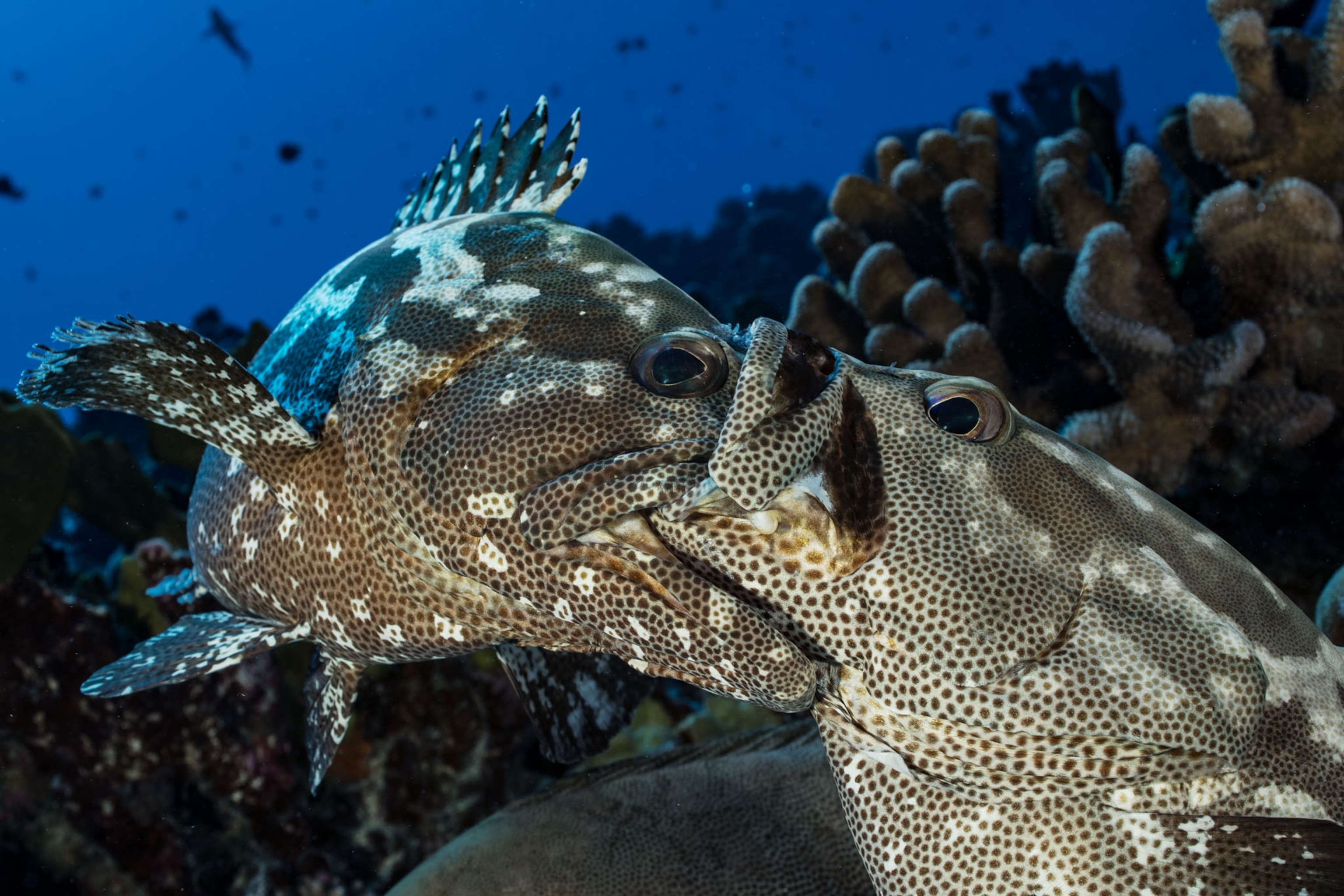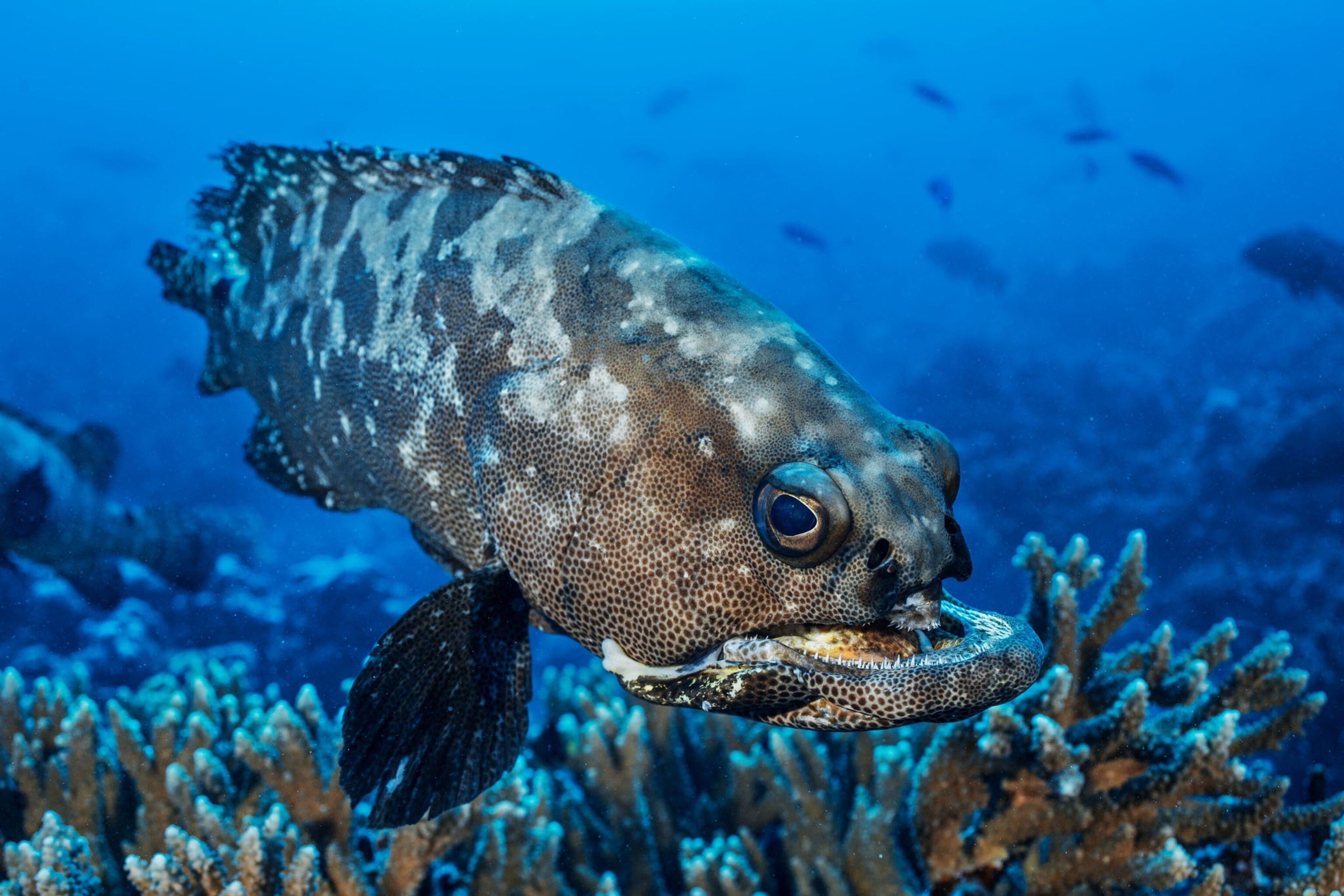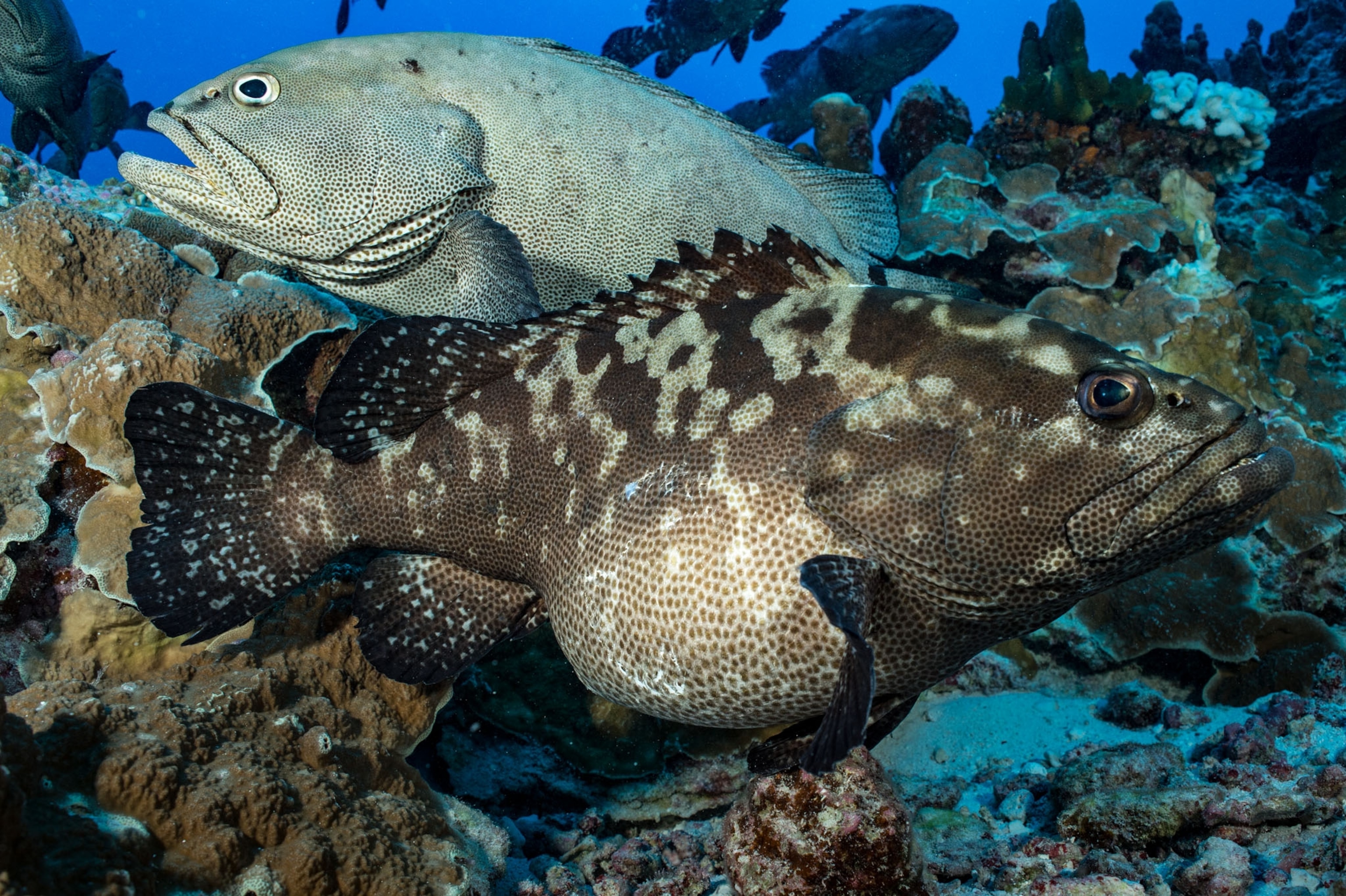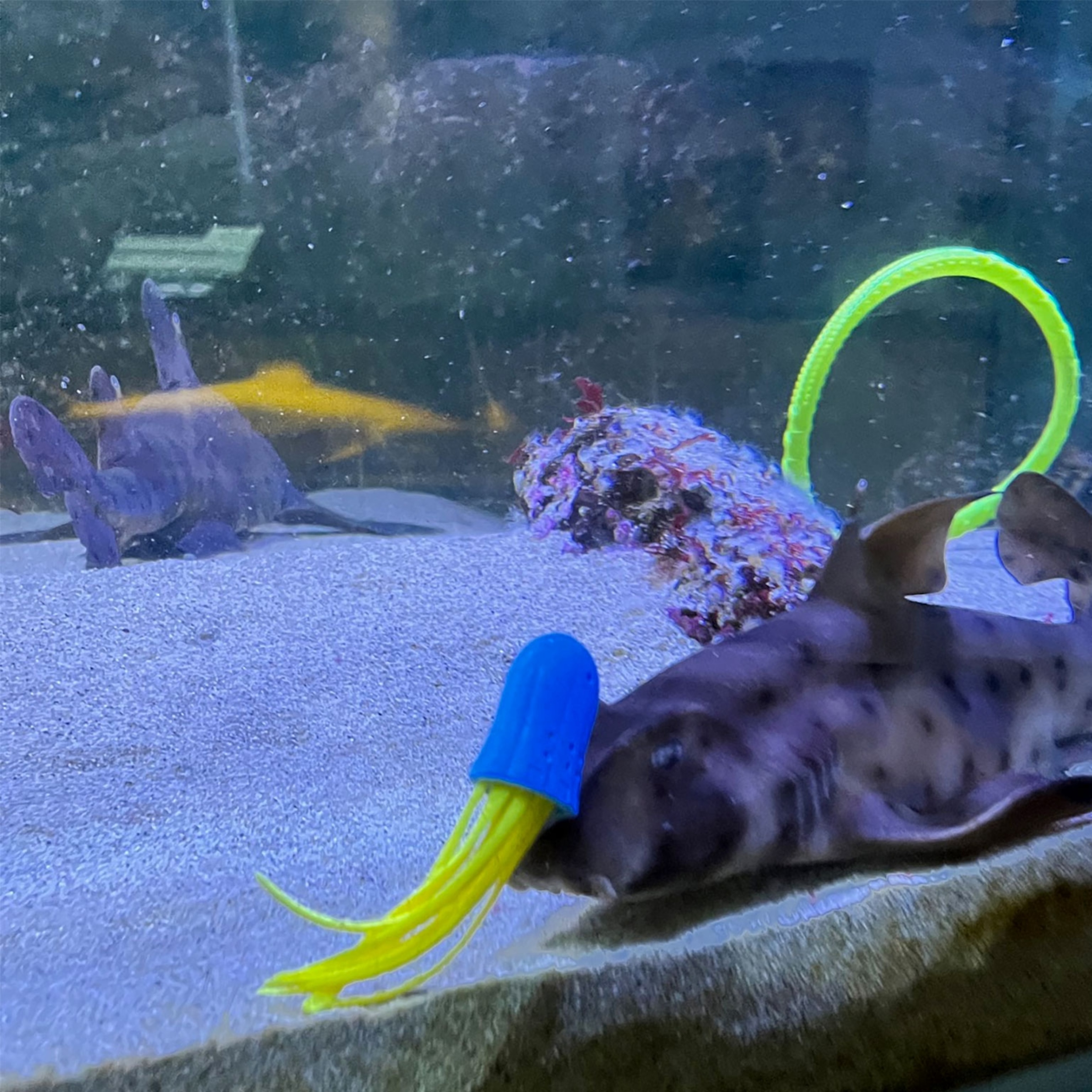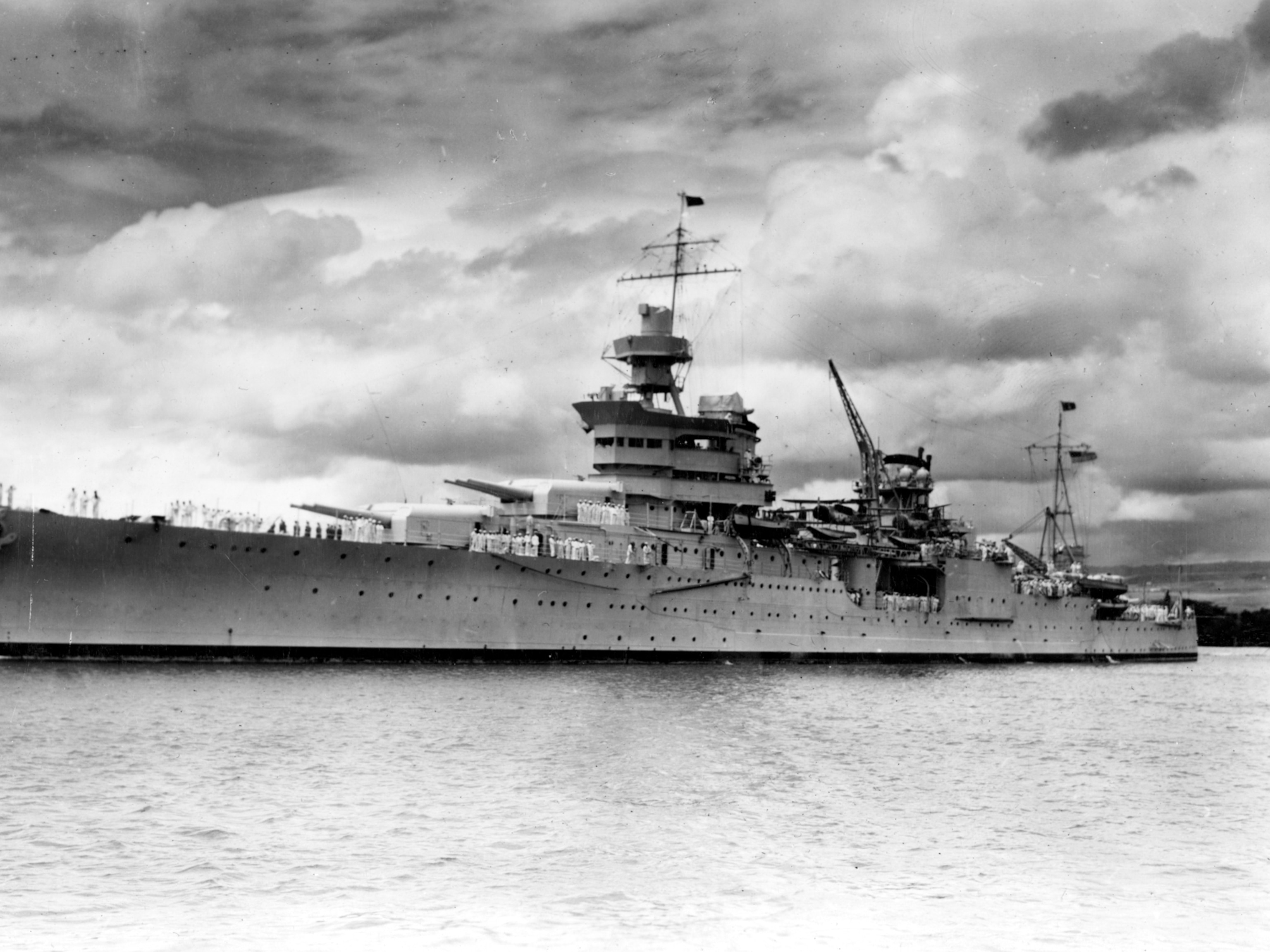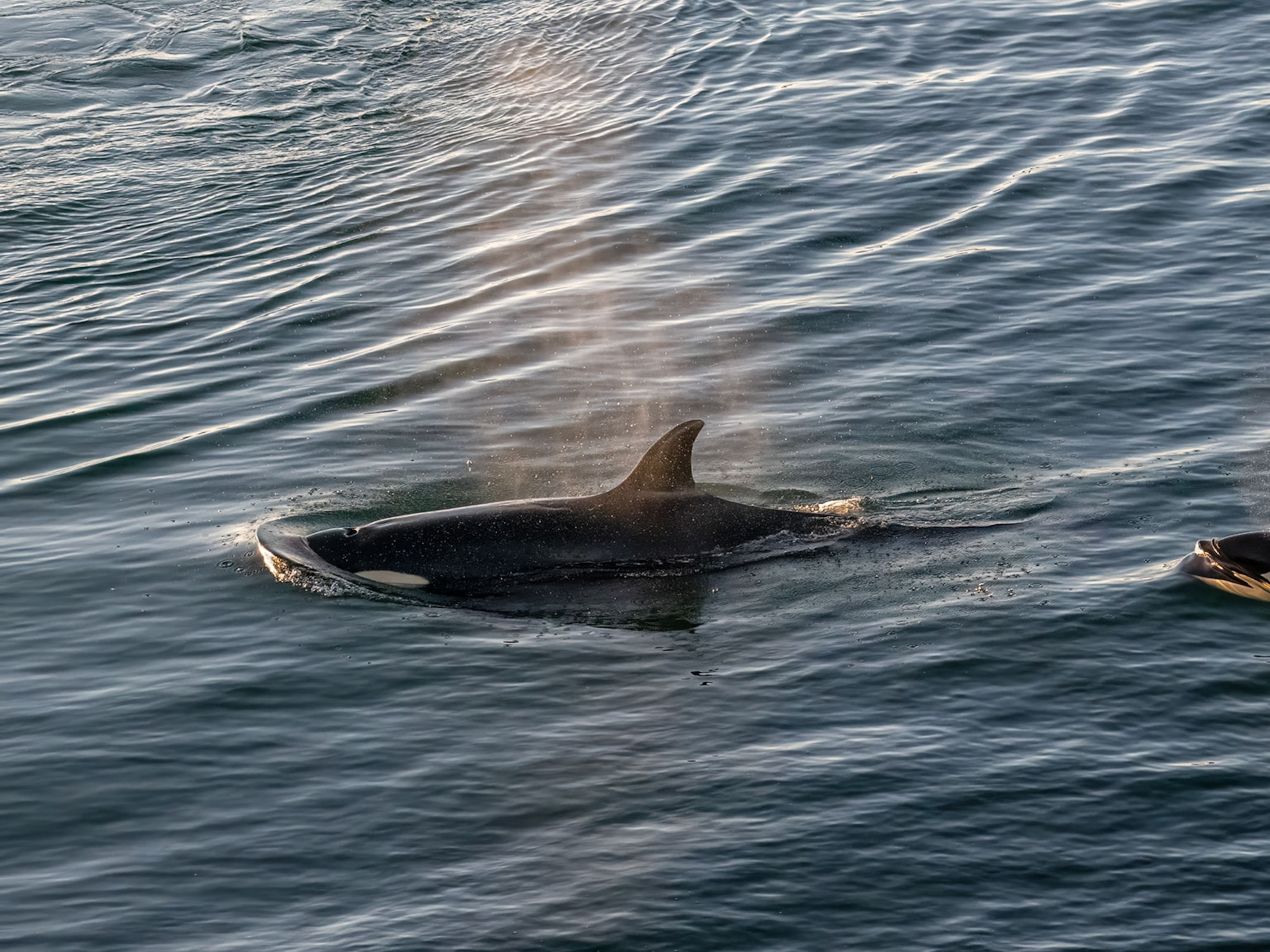Frenzy
A rare look at the violent, chaotic collision of hungry sharks and breeding groupers in a French Polynesian channel
At the south end of Fakarava Atoll, a 35-mile-long rectangle of coral in French Polynesia, a narrow channel cuts through the barrier reef. Every June thousands of camouflage groupers congregate in that channel, in an area the size of two to three football fields, to spawn the next generation. Violent tidal currents funnel through every six hours, filling and emptying the lagoon. The groupers, fat and about two feet long, are not alone: Hundreds of gray reef sharks assemble as well, to stalk them. The female groupers, like other reef fish, spend at most a few days in the spawning grounds. Yet for some reason the males, which lead solitary lives most of the year, spend weeks crowded into this treacherous place—until finally the whole mass of fish spawn at once, releasing clouds of eggs and sperm into the water. The locals told us it happens at full moon.
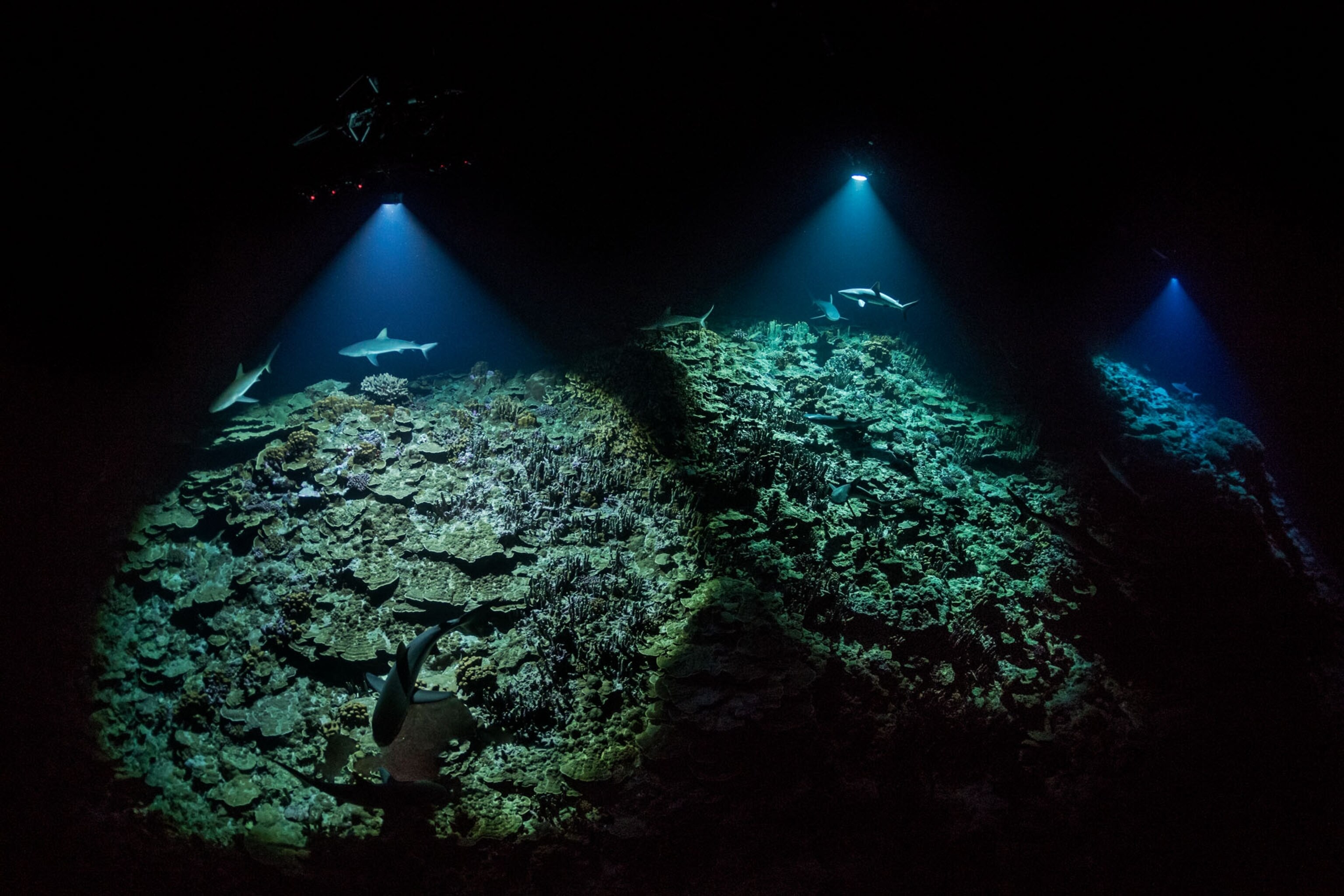
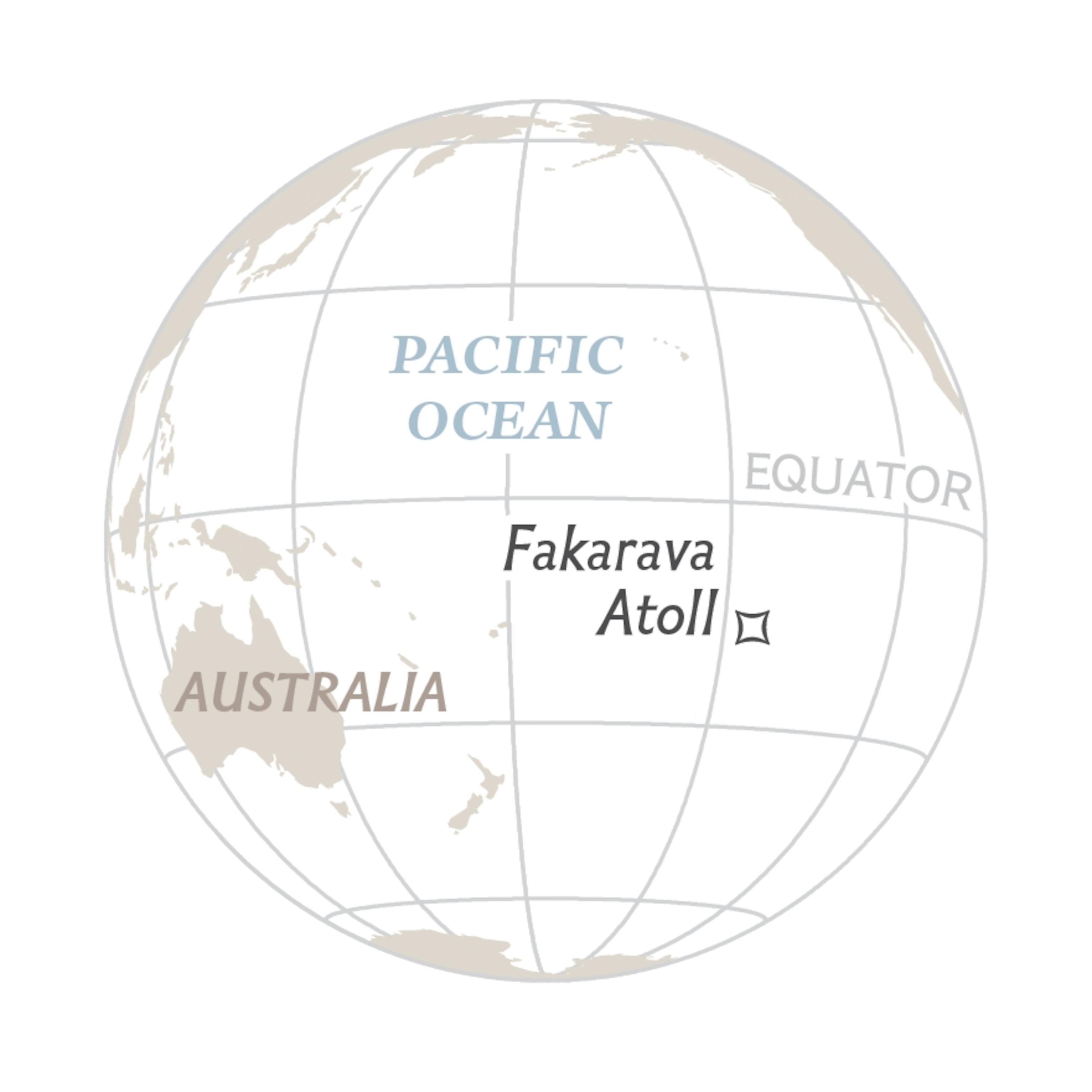
My team and I have spent the past four years trying to document and understand this amazing, mysterious spectacle. For a total of 21 weeks, we’ve dived day and night—about 3,000 diver hours in all—into the 115-foot-deep channel. In our first year, 2014, marine biologists Johann Mourier and Antonin Guilbert made the first accurate counts: There were some 17,000 groupers and 700 gray reef sharks in the channel. (The fish are protected here by a biosphere reserve.) That year I completed a continuous 24-hour dive—a technical feat that required the support of the whole team. The point wasn’t to set a record. The point was to observe the fish the way a biologist would animals on land, uninterrupted for a long time.
At dusk on that first night, I watched crustaceans and mollusks emerge from the bowels of the reef—and then retreat at the flash of my light. I watched the camouflage groupers darken their skin and withdraw into crevices to sleep. And I watched the sharks come alive, as if they’d awaited this moment. By day they swim languidly—wakeful groupers are too quick for them. Now, after nightfall, the sharks swarmed along the seabed by the hundreds. The water was electric with them, and I realized I’d underestimated their speed. Their agitation was disturbing: Owing to the gas mixture I was breathing for this 24-hour dive, I couldn’t ascend to safety whenever I wanted. I had to remain at depth with the sharks.
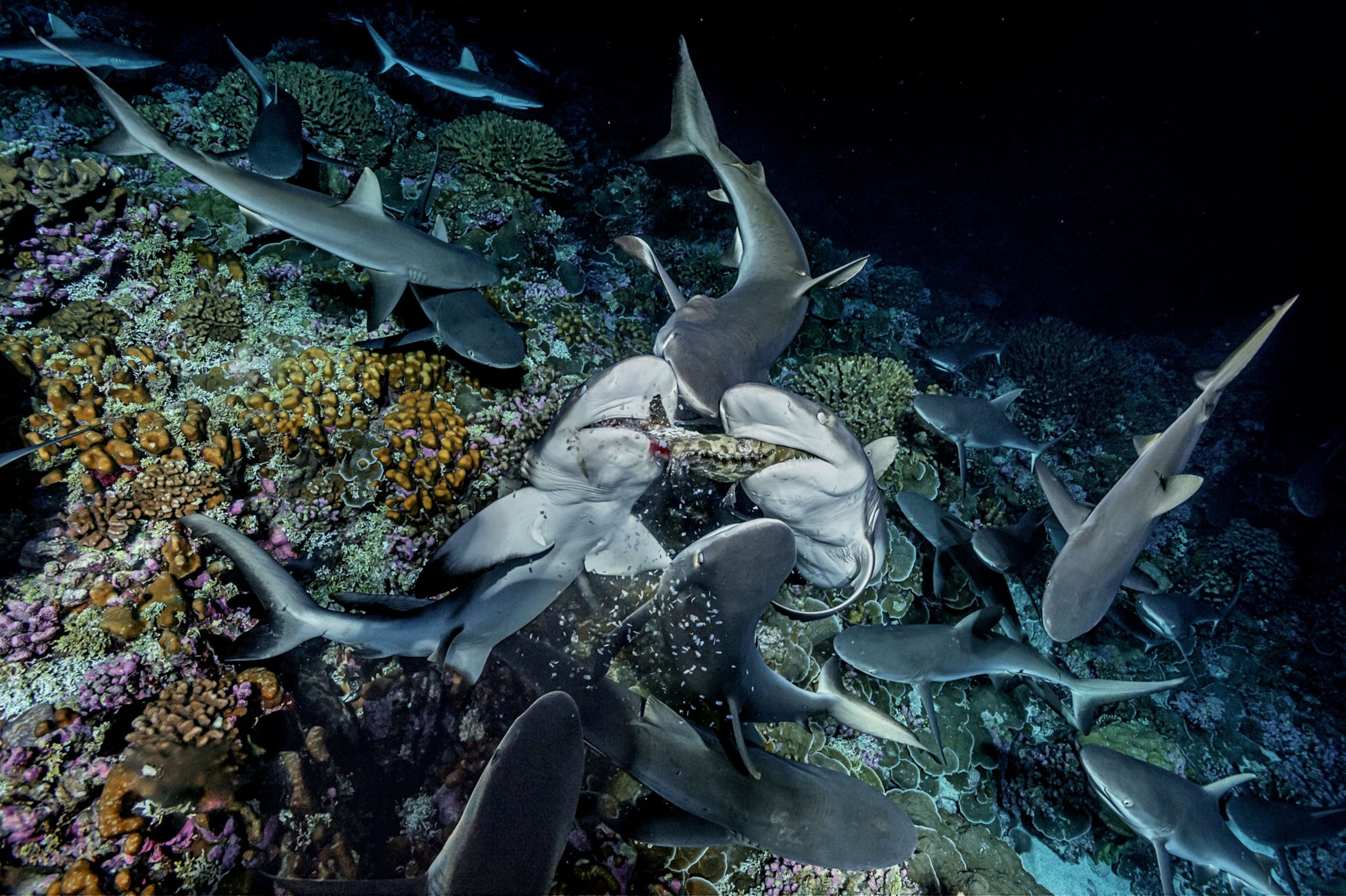
In the years since, I’ve gotten over my fear. It has given way to exhilaration—the exhilaration of learning to venture, without cages or chain mail suits or even shark billies, into a giant shark pack. That’s one thing we’ve discovered at Fakarava: The sharks hunt in packs, a bit like wolves, but less cooperatively.
A single shark is too clumsy to catch even a somnolent grouper. A pack of them is more likely to flush the fish from its hiding place and encircle it. Then they tear it apart. Seen live, the attack is a frenzy that explodes before us. Only later, thanks to a special camera operated by Yanick Gentil that captures a thousand images a second, are we able to watch the sharks in slow motion and appreciate their efficiency and precision.
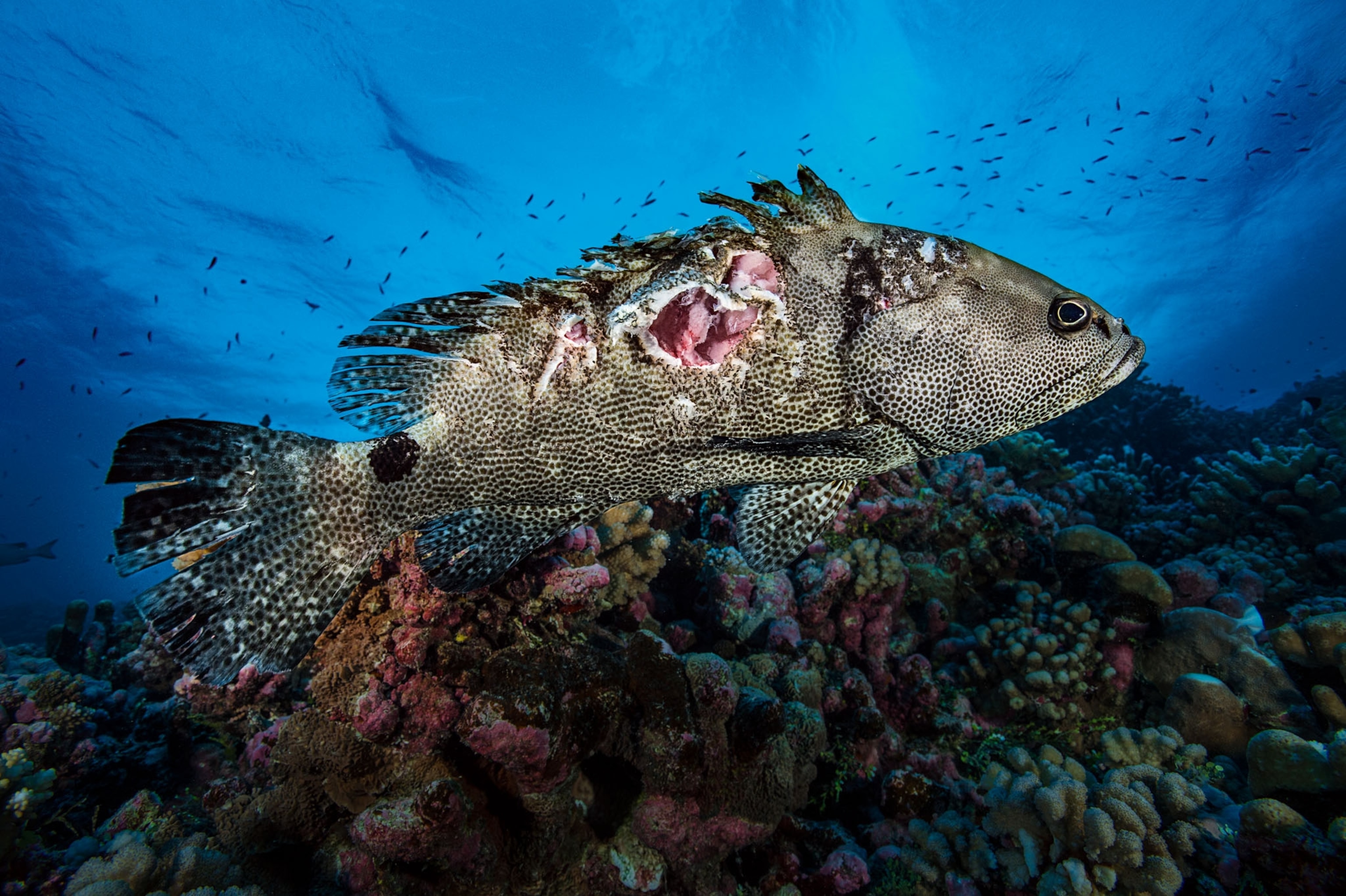
To the sharks, we humans are obstacles, not targets. When we dive at night, they approach us constantly; the slightest movement or ray of light attracts them. Sometimes they butt us hard enough to bruise. Sometimes we calm an excited shark by grabbing its tail and flipping it on its back, inducing a kind of trance. But only once since getting close to them have I worried that they might bite—when I felt a sudden stinging pain on the back of my thigh. My hand found the tear in my wet suit; I could see the blood from a wound that later would require four stitches. Luckily, two cameras filmed the scene: It wasn’t the shark itself but the scalpel-like spines of a large surgeonfish that sliced my skin. The shark had the fish in its jaws and was shaking it violently.
Gray reef sharks devour hundreds, perhaps thousands, of groupers during the weeks the fish congregate at Fakarava. They injure many more. The morning after my overnight dive, as the groupers began to stir, I photographed a gallery of survivors. The wounds were grave: torn fins, gill covers ripped off. But even in such a sorry state, the groupers seemed undeterred. The males challenged each other again and again, face-to-face, struggling hysterically for dominance—slaves to their reproductive instinct.
On our most recent expedition, last year, we finally got a good look at the point of it all. The day of spawning, the whole ecosystem changes: The water fills with tens of thousands of sardinelike fusiliers, which sense something is up. Female groupers, bellies swollen with eggs, rest in camouflage coloring near or on the seabed. The pale gray males watch from above. At intervals a male goes down to parade before and jostle a female. He bites her belly, presumably to induce spawning.
Very suddenly it begins: pandemonium. Bands of a dozen or so groupers shoot upward all around us, like fireworks. Each band consists of many males pursuing a single female. The sharks plunge into the fray, mostly without success; the groupers are too fast. The individual sex act lasts less than a second, and we can scarcely see, much less understand, what’s happening. The fusiliers block our view, rushing in to swallow clouds of grouper eggs and semen as soon as they appear. The remaining cells are mixed randomly by the powerful tidal current as it carries them out to sea.
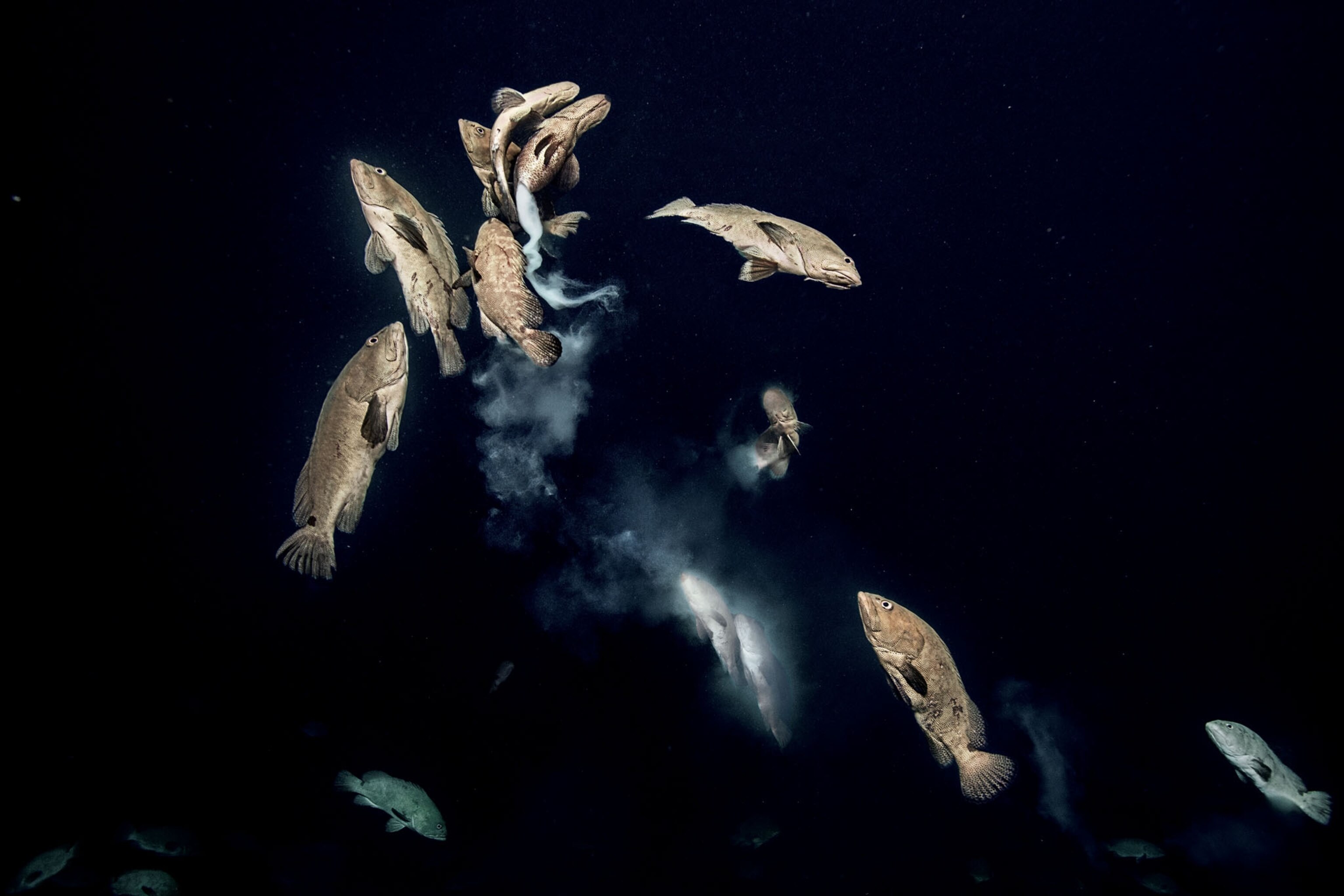
The whole anarchic spectacle is over less than an hour, and we’re left wondering, what’s the use? For a male grouper, what’s the use of fighting other males for four weeks, at risk every night of being shredded by sharks, if in the end you don’t get a female all to yourself, and to know that it’s your sperm fertilizing her eggs? It seems a complete waste of energy—which nature normally abhors.
Once again, Gentil is in the right place at the right time. His camera captures that one-second act in one grouper couple. In slow motion, everything becomes clear: The male that has earned the right to be closest to the female gets to begin breeding with her. He presses his body to hers for as long as he can. The other males are already converging on the couple; there’s no exclusivity. The dominant male’s hard-won prize, after four weeks of bitter battles, is just to be first in line—to have the best odds of transmitting his genes.

The locals were right: It all happens at the full moon, and just before dawn. On my 24-hour dive, before the spawning that year, I had time to appreciate the dawn, to watch the dim blue glow gradually filter from above into the inky depths, where I waited with the drowsing groupers. At that moment, I heard whales singing, probably many miles away. It reminded me of church bells. I don’t know if you can get goosebumps under a thick wet suit, but it felt like I did. I don’t know either for whom the whales were tolling. But I do know we’ll be going back to Fakarava this June.

